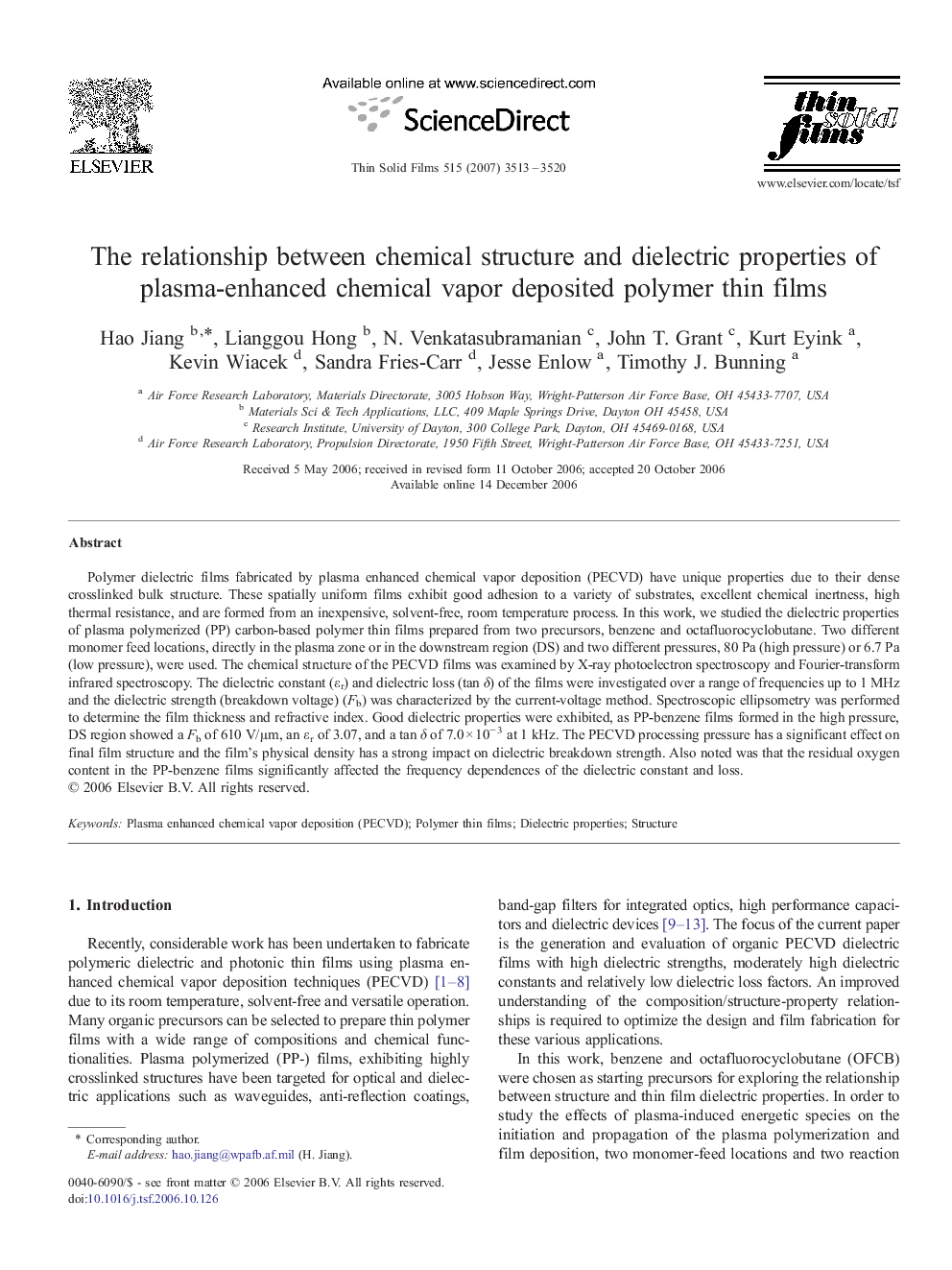| Article ID | Journal | Published Year | Pages | File Type |
|---|---|---|---|---|
| 1672985 | Thin Solid Films | 2007 | 8 Pages |
Polymer dielectric films fabricated by plasma enhanced chemical vapor deposition (PECVD) have unique properties due to their dense crosslinked bulk structure. These spatially uniform films exhibit good adhesion to a variety of substrates, excellent chemical inertness, high thermal resistance, and are formed from an inexpensive, solvent-free, room temperature process. In this work, we studied the dielectric properties of plasma polymerized (PP) carbon-based polymer thin films prepared from two precursors, benzene and octafluorocyclobutane. Two different monomer feed locations, directly in the plasma zone or in the downstream region (DS) and two different pressures, 80 Pa (high pressure) or 6.7 Pa (low pressure), were used. The chemical structure of the PECVD films was examined by X-ray photoelectron spectroscopy and Fourier-transform infrared spectroscopy. The dielectric constant (εr) and dielectric loss (tan δ) of the films were investigated over a range of frequencies up to 1 MHz and the dielectric strength (breakdown voltage) (Fb) was characterized by the current-voltage method. Spectroscopic ellipsometry was performed to determine the film thickness and refractive index. Good dielectric properties were exhibited, as PP-benzene films formed in the high pressure, DS region showed a Fb of 610 V/μm, an εr of 3.07, and a tan δ of 7.0 × 10− 3 at 1 kHz. The PECVD processing pressure has a significant effect on final film structure and the film's physical density has a strong impact on dielectric breakdown strength. Also noted was that the residual oxygen content in the PP-benzene films significantly affected the frequency dependences of the dielectric constant and loss.
